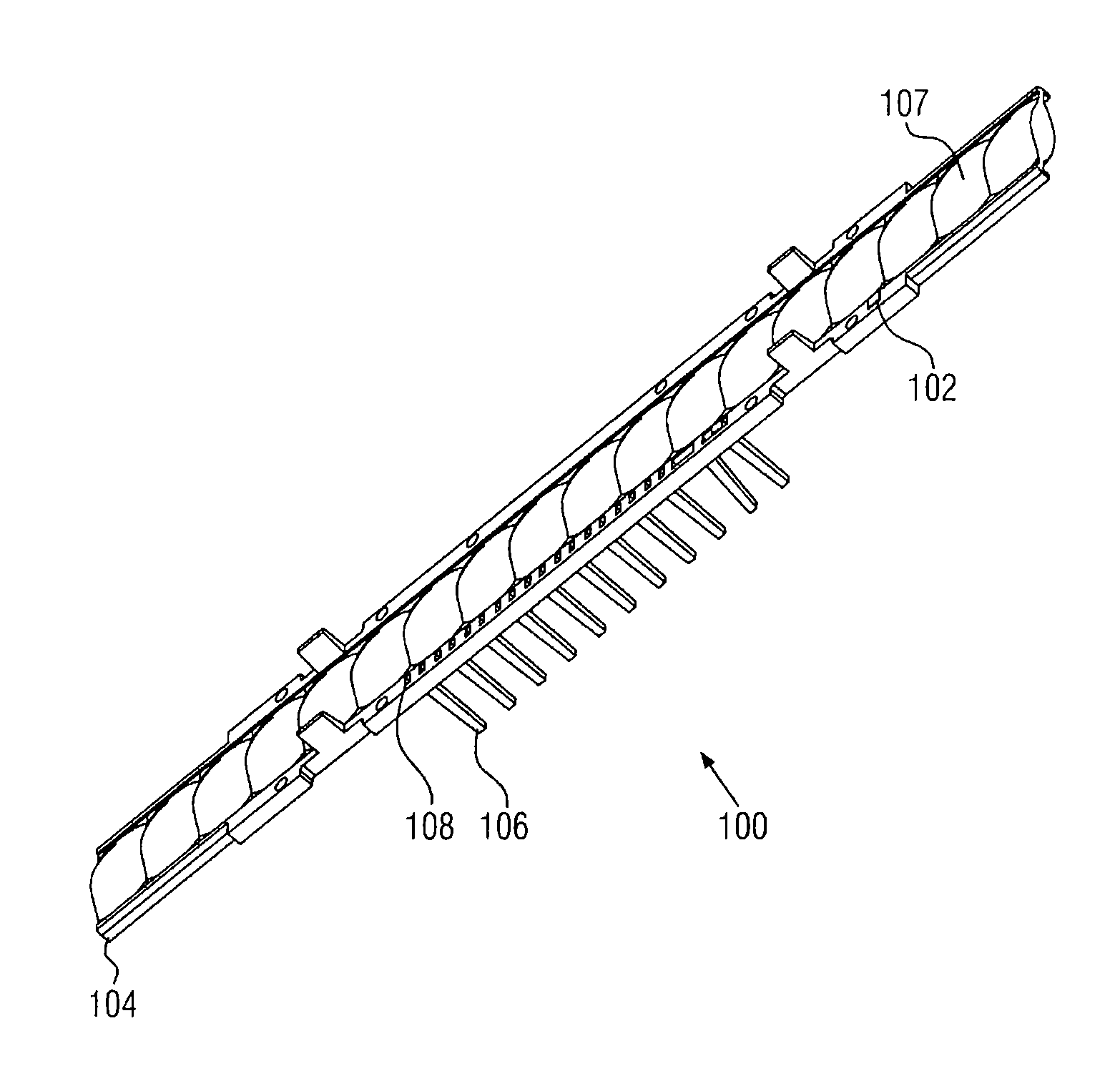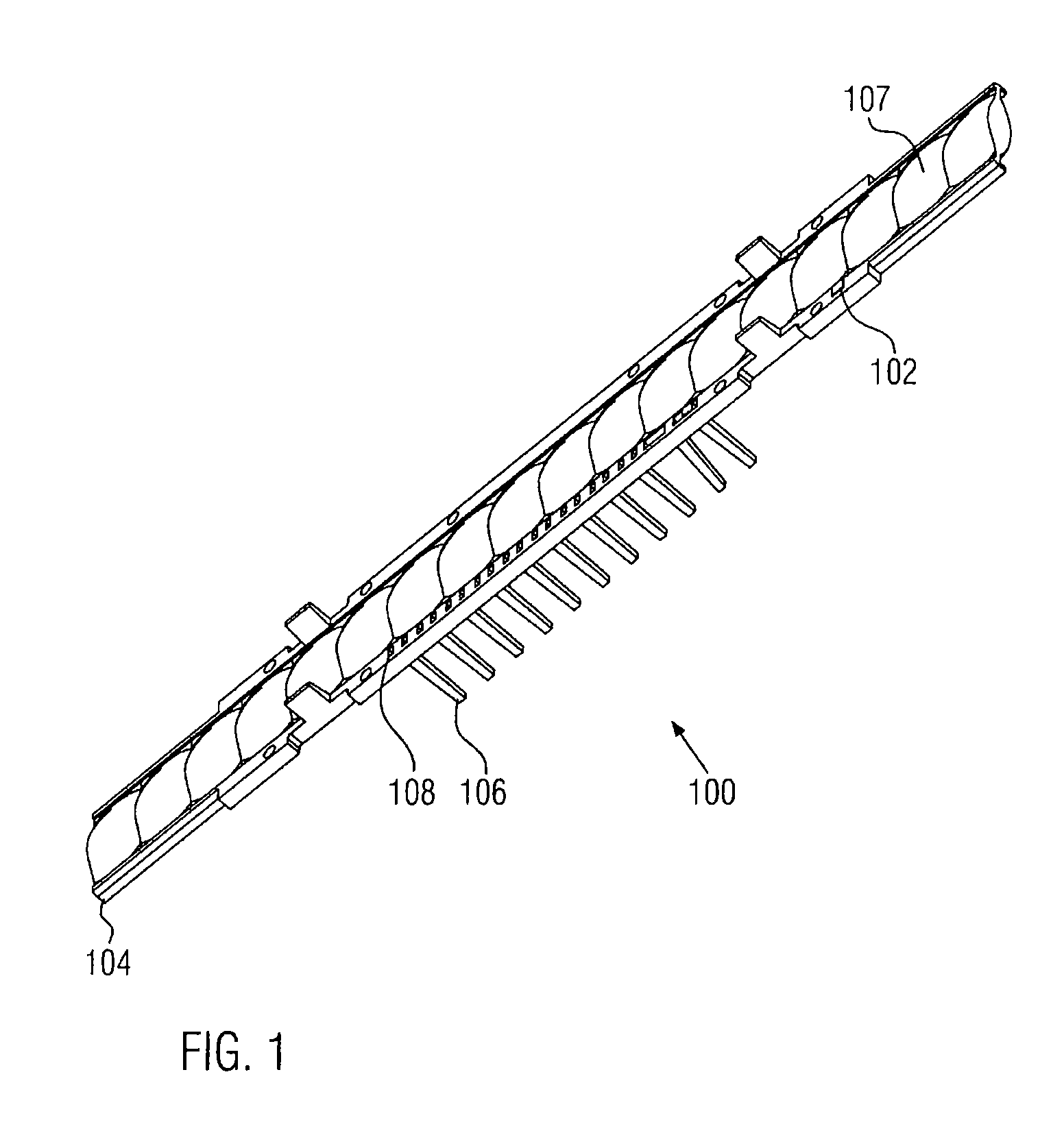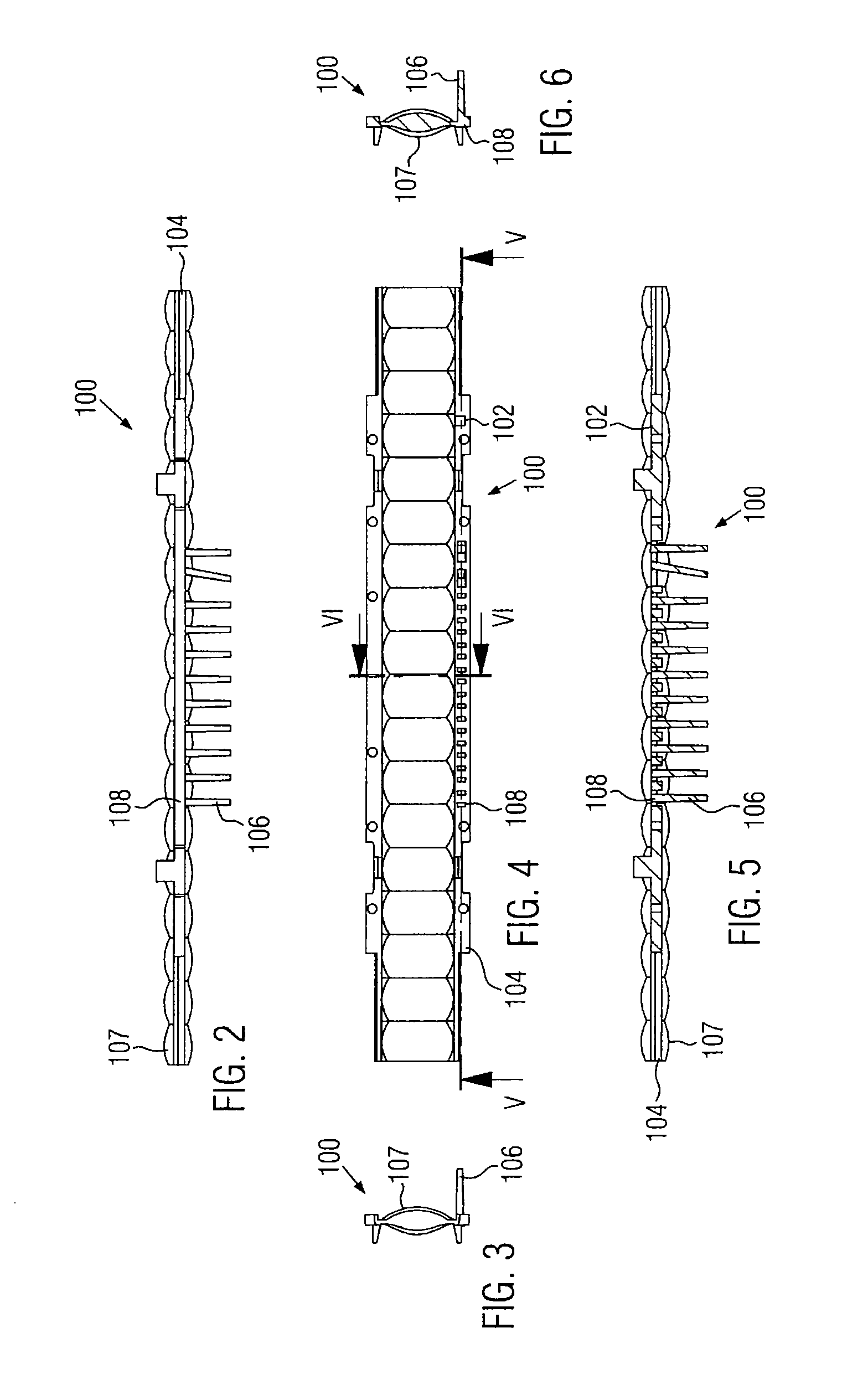Integrated Laser Alignment Aid Using Multiple Laser Spots Out Of One Single Laser
a laser spot and laser technology, applied in the field of light curtains, can solve the problems of high fabrication cost, increased cost due to the addition of laser emitters for each transceiver bar, and incompatible modular transceiver bar configuration with laser alignment techniques, etc., to achieve easy fabrication and space-saving shape, enhance the accuracy of optical axis alignment, and facilitate the effect of fabrication
- Summary
- Abstract
- Description
- Claims
- Application Information
AI Technical Summary
Benefits of technology
Problems solved by technology
Method used
Image
Examples
Embodiment Construction
[0066]Referring now to FIG. 1, an optical unit according to the present invention is explained in more detail.
[0067]The optical unit 100 is designed to be mounted within a support element of a light curtain monitoring a protective field. The optical unit 100 is combining several optical functions as one integral part: Firstly, it accommodates an optical processing element 102 for generating a defined radiation pattern from the radiation which is emitted by an alignment radiation source (not shown in the figure). The optical processing element 102 may for instance comprise a micro-structured Diffractive Optical Element (DOE) which transforms the radiation emitted by a radiation source, such as a laser diode, into a pattern that can be used advantageously for aligning a support element to which the optical unit 100 is connected with respect to a second support element of a light curtain arranged in some distance thereto.
[0068]For a person skilled in the art, it is however clear that t...
PUM
 Login to View More
Login to View More Abstract
Description
Claims
Application Information
 Login to View More
Login to View More - R&D
- Intellectual Property
- Life Sciences
- Materials
- Tech Scout
- Unparalleled Data Quality
- Higher Quality Content
- 60% Fewer Hallucinations
Browse by: Latest US Patents, China's latest patents, Technical Efficacy Thesaurus, Application Domain, Technology Topic, Popular Technical Reports.
© 2025 PatSnap. All rights reserved.Legal|Privacy policy|Modern Slavery Act Transparency Statement|Sitemap|About US| Contact US: help@patsnap.com



